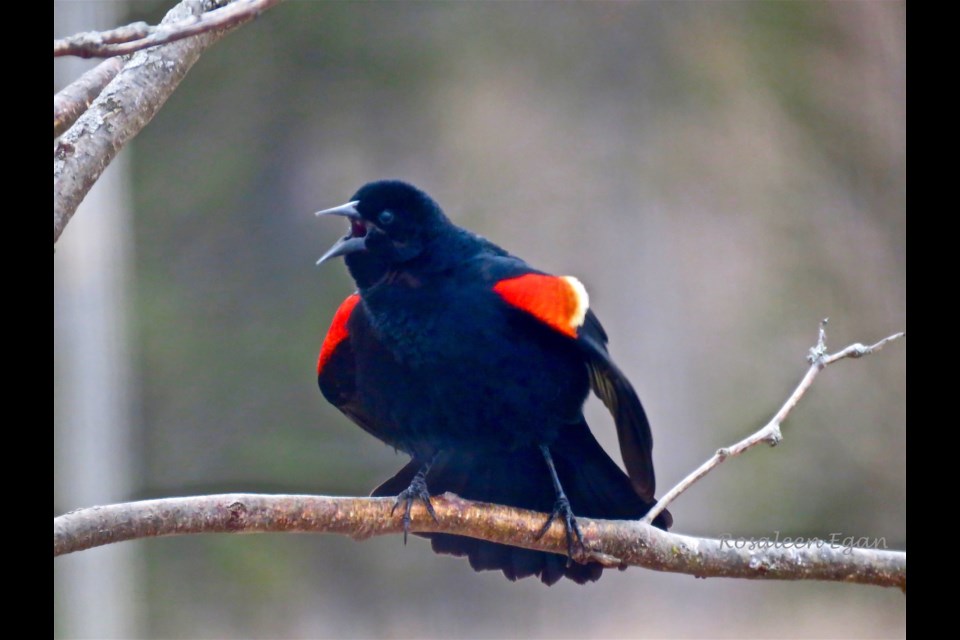Early this past week one of my sisters messaged me to say the Red-winged Blackbirds were back in her yard. They had also arrived in mine. She talked about how it was a sound from our childhood in spring when we shared a backyard and the wide-open spaces of the village where we lived.
We spent a lot of time outdoors with our many siblings and lots of other kids from the village. There were deep ditches and culverts running under the road to give drainage. We did risky, fun things such as build rafts from broken tree branches tied together to float in “ponds” where the culvert wasn’t doing its job and flooding a nearby field. Up the road where the water ran swiftly through a working culvert we’d make “fish” from the long dead grass of the year before and race them under the road. All this time, Red-winged Blackbirds created the background music.
I got used to seeing them in wetland areas and in ditches sitting on cattails and reeds. I live in the county again, and I do see them in those places, but they also come along to the feeders and lawns often in the company of Grackles and European Starlings. They create large flocks together outside breeding season.
Red-winged Blackbirds are one of the first birds returning from the south and I’m intrigued to see them mingling with Common Redpolls who will soon be going home to the Arctic. I wonder what stories they could tell each other of the places they’ve been.
(I’ll just note here that after writing a month ago I only a few redpolls, I suddenly had 20 or so).
As much as I am pleased with the arrival of red-wings, as the season goes on their welcome wanes. They can be bullies. Last year, I got a little annoyed as they muscled their way through the season, and I’m sure I suggested to them they ought to be hanging out in marshes or ditches.
They mainly eat insects and seeds including native sunflowers and ragweed. They can use their bills to open the stalk of aquatic plants to eat insects inside. Corn and wheat may attract them to farm life.
Red-wings are abundant across North America, yet their numbers have gone down somewhat in recent years. The birds have curious relationships with each other as they nest in “loose” groups, usually in marshy areas. Allaboutbirds.org says: Typically five or more (up to 15) females have to crowd their nests into any one male’s territory. They typically mate with the territory holder, though many also mate with nearby males.
Females are streaky brown, and come north later than the males. I sadly don’t have a photo. The impressive red patch on the male’s wings is not always visible. According to Audubon.org: To defend his territory and attract a mate, male perches on high stalk with feathers fluffed out and tail partly spread, lifts leading edge of wing so that red shoulder patches are prominent, and sings. Also sings in slow, fluttering flight.
To hear recordings of Red-winged Blackbird sounds click: https://www.allaboutbirds.org/guide/Red-winged_Blackbird/sounds
While my sister and I are not as likely to get soakers (boots full of water) in this season of life, the sound and the appearance of this familiar bird stirs happy memories of springs past, and ignites hope for the spring ahead.
I share experiences of bird visitors to this property with readers every couple of weeks. Until next time, keep your eye to the sky, and look for birds that may come by.
Rosaleen Egan is a freelance journalist, a storyteller, and a playwright. She blogs on her website rosiewrites.com.



